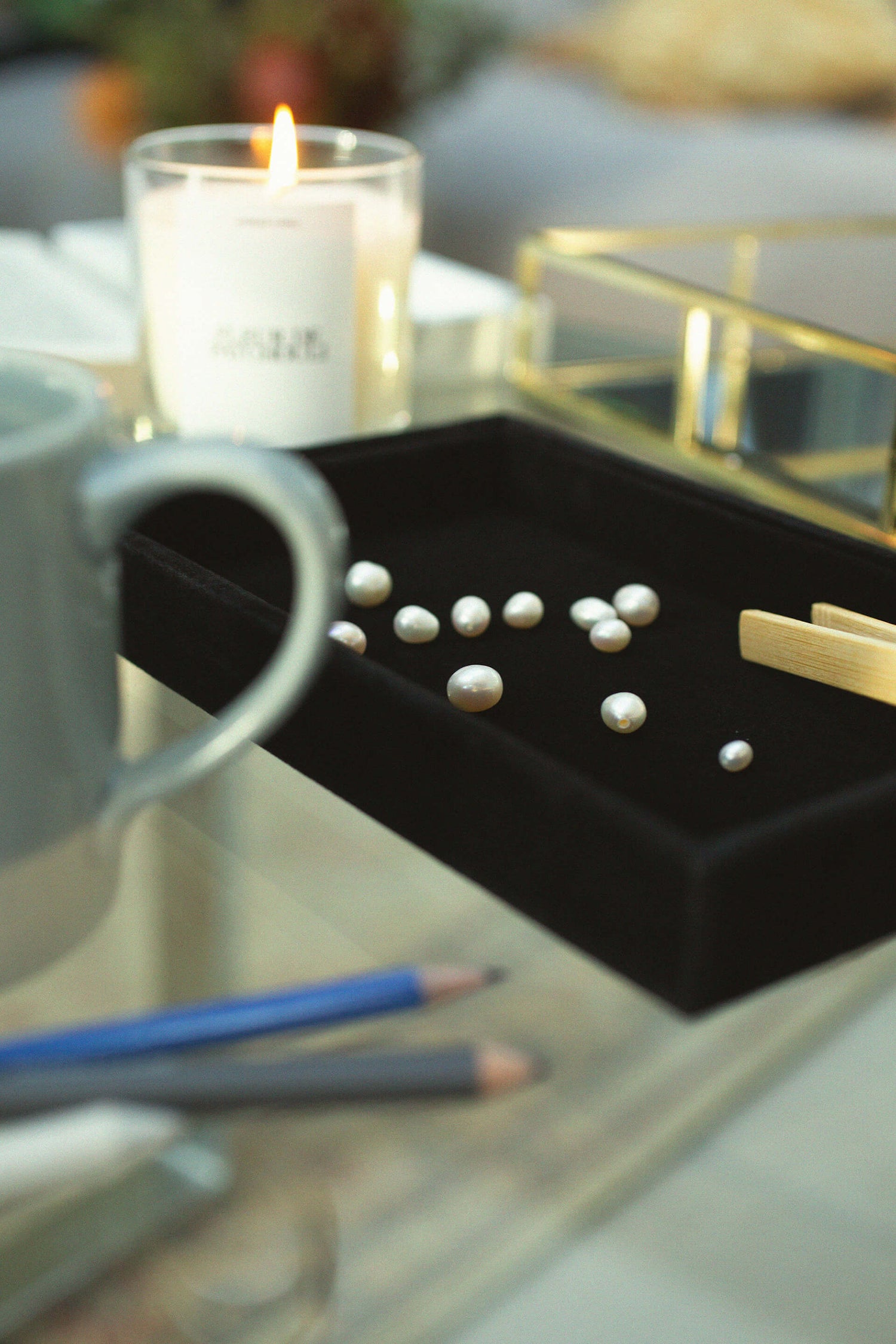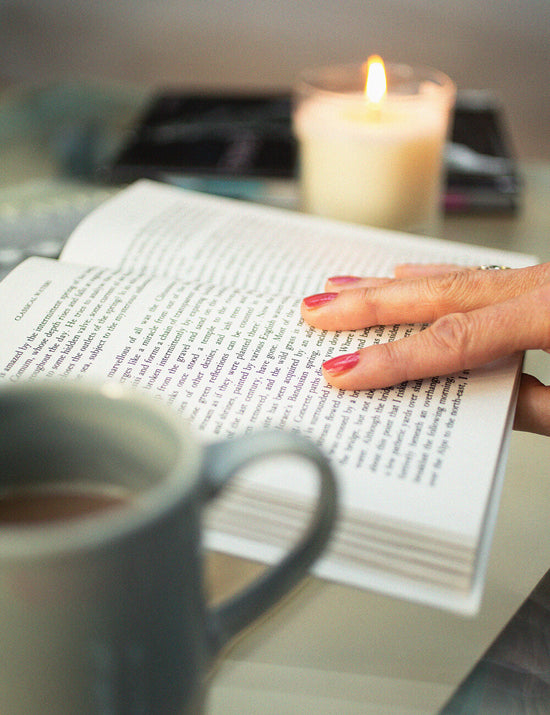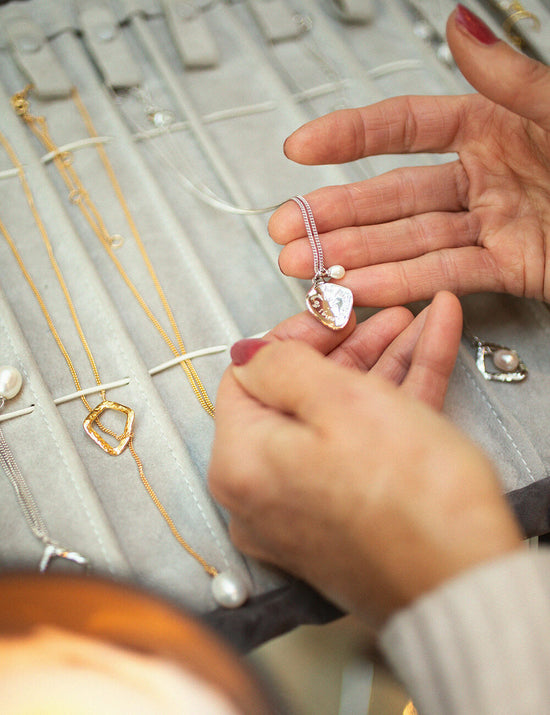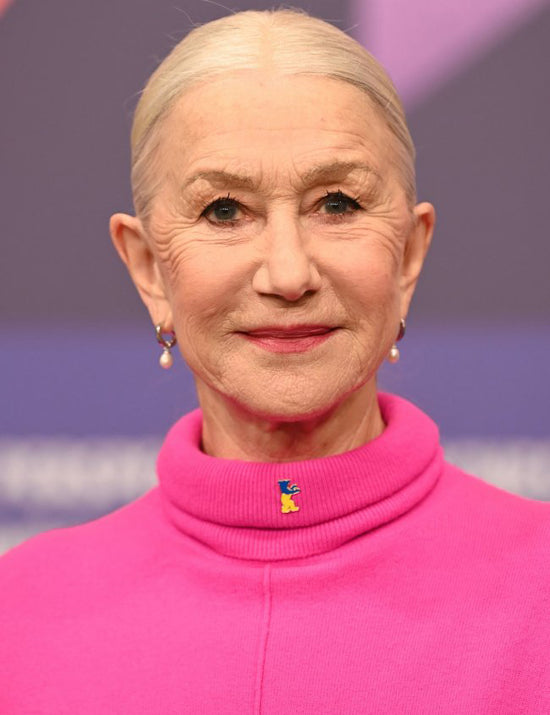Our Craftsmanship
Growth & Harvest
Technicians gently add a small bead or a tiny piece of mantle tissue into a live pearl mussel. This is a skilled and delicate procedure and if successful the mollusc will start to slowly deposit iridescent layers of nacre, beginning the process of the creation of a cultured pearl.
The implanted mussels are then returned to freshwater where they are regularly inspected; environmental factors such as water temperature and pollution need to be frequently monitored. Freshwater pearls typically take between 6-24
months to grow depending on type and size. The mussels can be up to A4 in size and grow many pearls to a single shell.
our craftsmanship
Treatments & quality
After being harvested the pearls undergo further treatment to prepare them for jewellery. They are soaked for several days in a mild cleaning solution under intense fluorescent light; this removes any deposits and odours that may have been picked up during their time in the water. It also enhances their surface quality.
The pearls are then assessed for quality and grouped by size, shape and lustre. To assemble a single strand workers must comb through thousands of pearls to match for consistent size, shape, colour, lustre and surface quality. This is time intensive and detailed work and can take months to complete.
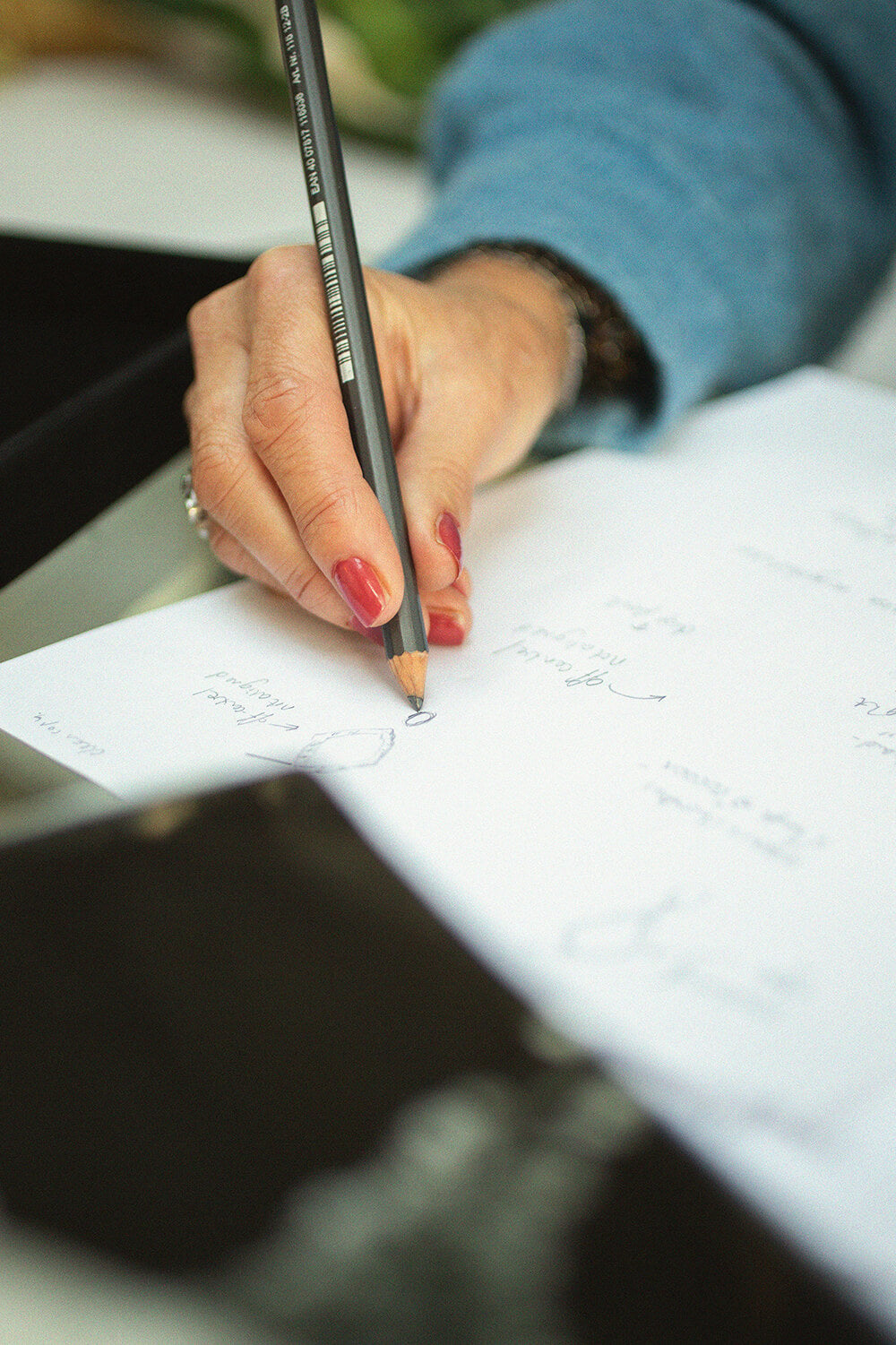
Our Craftsmanship
Design & Create
Every piece of Claudia Bradby jewellery has a special journey from idea to finished piece. After the initial hand selection of pearls and following on from the design process in Claudia’s Hampshire studio, drawings and measurements are then discussed in Hong Kong where the pearls are strung by a family business who Claudia has worked with for over 15 years.
For the more intricate silver pieces, Claudia works closely with a manufacturer based in Chiang Mai. This is a second generation family business, and involves very precise and highly skilled processes. Each item is either stamped or cast and involves a minimum of 6 steps to the finished piece; each step looked after by a skilled crafts person.
"A single pearl is as unique as a fingerprint.
No two pearls are the same, and no two people are the same."
Our Pearls
Shape
We use a variety of different pearl shapes in our designs as detailed below:
BAROQUE – Irregular in shape and surface quality, used in our charm bracelets and bee pearl necklace.
BUTTON – Round and symmetrical in shape with a smooth surface, used in our smaller stud earrings and simple pearl bracelet, among others.
COIN – Flattened disc shaped pearl resembling a coin with an irregular surface, used in our coin pearl pieces.
RICE – Oval in shape, slightly narrower at the ends than the centre with a smooth surface, as used on our world is your oyster necklace and many more designs.
POTATO – Distinctively irregular in their shape. Used in our signature heart pearl necklac
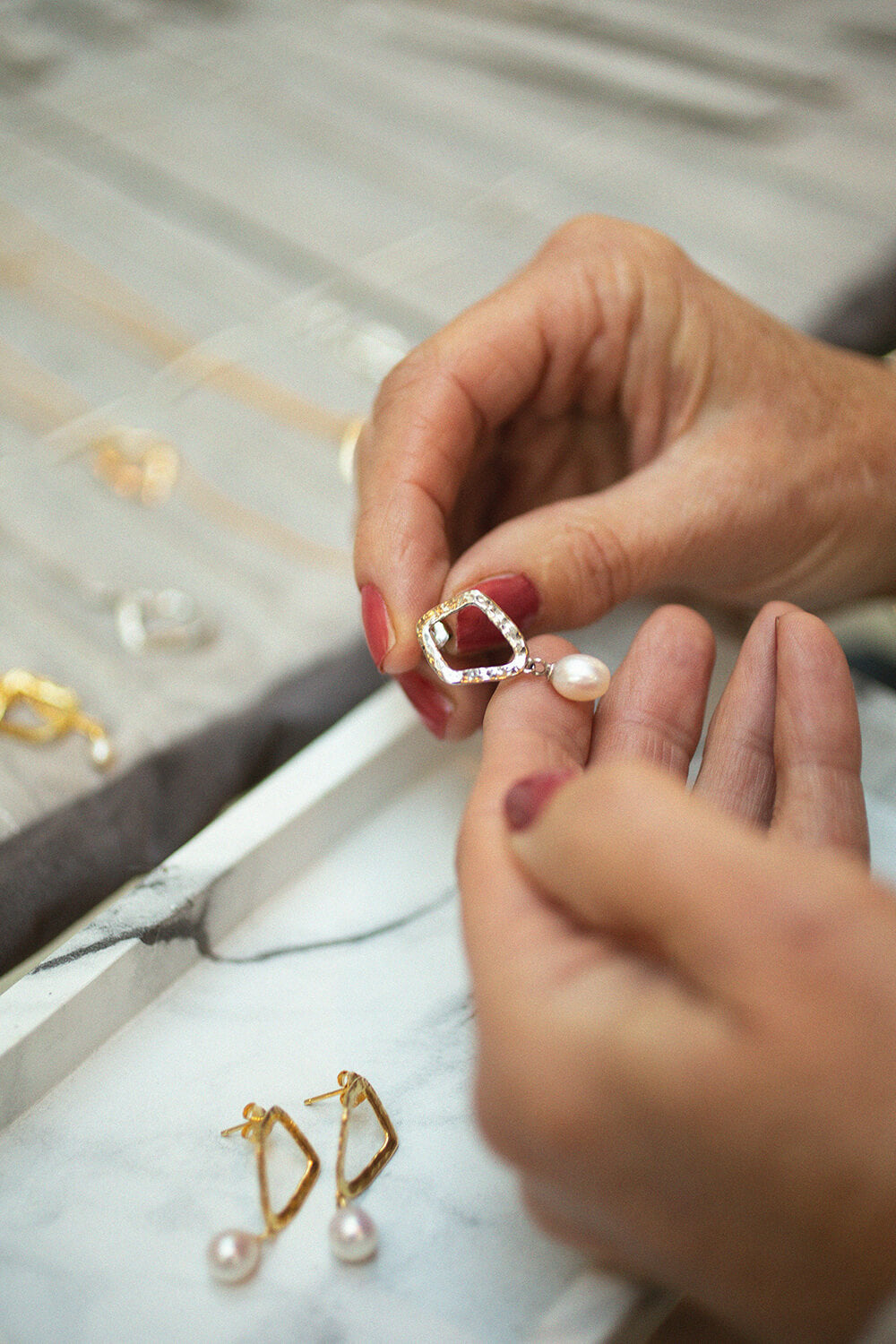
our PEARLS
Surface
Surface quality refers to the finish on the surface of the pearl. Only a tiny percentage of pearls have a totally smooth, even surface. The majority are marked with a degree of tiny pits, bands and bumps. The pearls we use do not have unsightly blemishes. Pearls are a natural product and natural imperfections are quite acceptable, even desirable. We often choose pearls specifically for their imperfect surface as a reflection of their natural heritage and uniqueness.
Our pearls
Lustre
We value the lustre of a pearl above other qualities because this is what makes a pearl beautiful. Lustre refers to the shininess of a pearl – the shinier it is, the better its lustre. When a pearl has a good lustre light travels through its many layers of nacre giving the pearl an amazing inner glow; this is what makes a real pearl so special as this quality cannot be replicated in artificial pearls.
There are two main factors which influence the lustre of a pearl during its growth. The first is the temperature it is grown in – pearls benefit from being cultured in a cooler temperature as this slows down the growth resulting in a better lustre. The second factor is the health of the mollusc that grows it. The mollusc is affected by any pollution in the water and the lustre is the first thing to be compromised. This is why it is so important for pearl farmers to look after the environment surrounding their pearl farms.
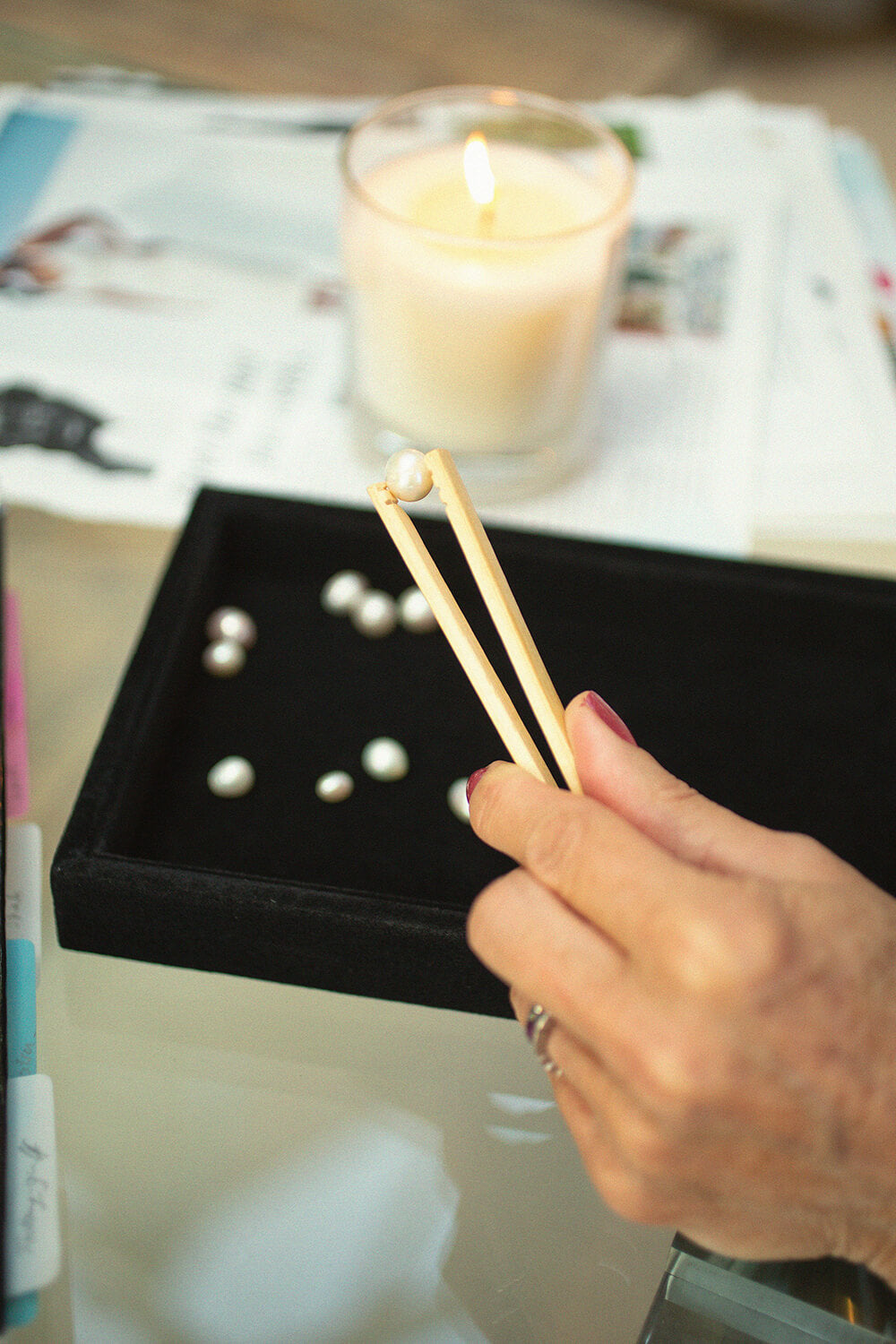
Our Pearls
Colour
We use natural white, real, freshwater pearls across our designs.
Our white pearls are presented in their natural colour, and we do not use dyed pearls so the colour of your pearls will not fade or change. However each pearl is unique and so we take time to match pearls, colour wise, in each design.
With such a variety of shapes and sizes of freshwater pearls, we have jewellery to suit all budgets and tastes. Knowing how individual your pearls are makes owning a piece of Claudia Bradby Jewellery even more special.
